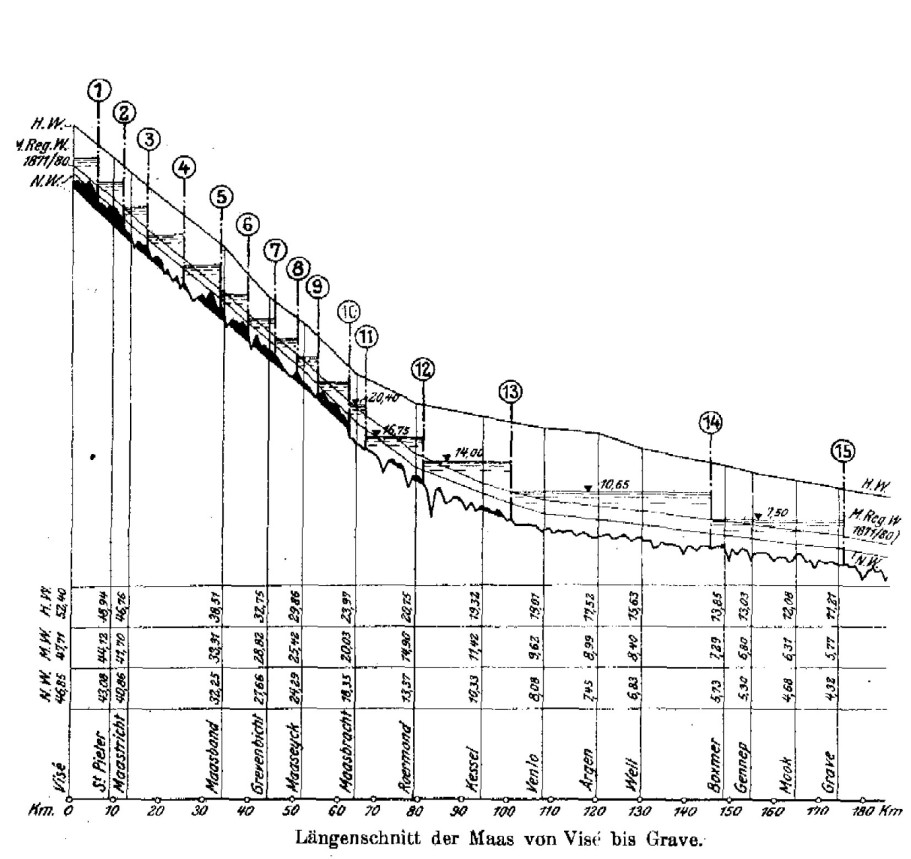SHIPPING NAVIGATION LOCKS
THE CHALLENGE:
The Albert Kanaal runs from the inland port of Liege to the port of Antwerp and is fed entirely by the Meuse. The total fall is 55.5 meters. Inland navigation accounts for the transport of about 40 million tons per year. The canal relies on tapping the water of the Meuse and competes in low flow with other purposes (irrigation, drinking water production, nature), as well as a migration bypass for many fish species.
The necessary discharge of 25 m3/s is easily met for most of the year, as the average Meuse discharge is about 200-250 m3/s. In dry periods of several weeks, however, the Meuse discharges can drop below 50 m3/s. Based on the Meuse Dischrage Treaty, Flanders (northern Belgium) and the Netherlands divide the available water during droughts – sometimes leading to a lack of water for the Albert canal. Climate change may cause a more frequent occurence of low Meuse discharges.

THE PLAN:
Pumps will be installed on the Lock of Ham as a pilot case. They will have a capacity of 15 3/s. They are designing in a fish-friendly way. In periods with sufficient discharge of the meuse these pumps will work in reverse direction as a hydro electric power station. The large fall at the lock (10m) can produce green electricity for about 1000 inhabitants and contribute to the production of renewable energy.